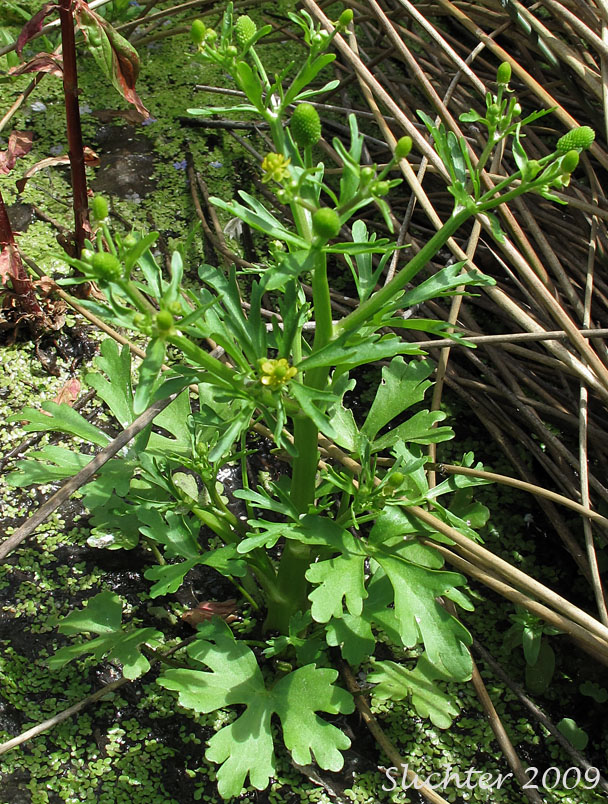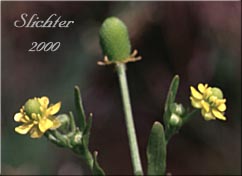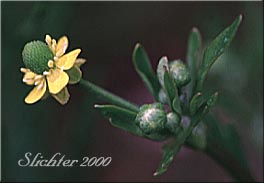
 Characteristics:
Characteristics:
Celery-leaf buttercup is a low-growing annual wildflower with one to several freely branched and erect stems rising 20-80 cm from a cluster of basal leaves. The stems are hollow and do not root at the nodes. The herbage is mostly smooth or waxy although occasionally some stiff hairs may be found. The basal leaves have petioles about 2-4 times longer than the blades which measures 2.5-4 cm long. The blades are kidney-shaped and highly divided into 3 lobes, each with toothed or lobed margins. The stem leaves are numerous, and alternate along the stems. These are more deeply divided than the basal leaves.
The flowers are at the ends of the branches, and are borne on strong pedicels from 1-3 cm long. The 5 yellow petals are 2-5 mm long while the 5 yellow sepals are spreading and measure 2-4.5 mm long. The green receptacle (as seen in the photo at right) is ellipsoid-cylindric in shape when in fruit and up to 14 mm long.. The stamens generally number from 15-20.
Celery-leaf buttercup may be found in moist meadows, seeps and along watercourses. It easily moves into moist, disturbed places.
Celery-leaf buttercup is native to both Eurasia and most of North America north of Mexico.
In the Columbia River Gorge it may be found between the elevations of 0'-2800' from near Troutdale, OR east towards Biggs Junction.
